Jason Moulton
Dynamic Autonomous Surface Vehicle Control and Applications in Environmental Monitoring
Mar 29, 2021

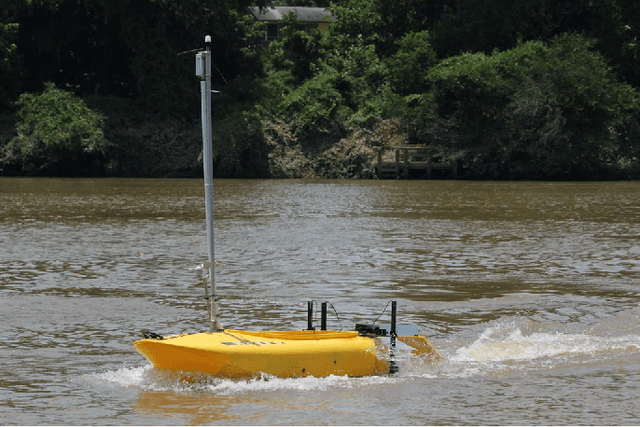

Abstract:This paper addresses the problem of robotic operations in the presence of adversarial forces. We presents a complete framework for survey operations: waypoint generation,modelling of forces and tuning the control. In many applications of environmental monitoring, search and exploration, and bathymetric mapping, the vehicle has to traverse in straight lines parallel to each other, ensuring there are no gaps and no redundant coverage. During operations with an Autonomous Surface Vehicle (ASV) however, the presence of wind and/or currents produces external forces acting on the vehicle which quite often divert it from its intended path. Similar issues have been encountered during aerial or underwater operations. By measuring these phenomena, wind and current, and modelling their impact on the vessel, actions can be taken to alleviate their effect and ensure the correct trajectory is followed.
Dynamic Autonomous Surface Vehicle Controls Under Changing Environmental Forces
Aug 07, 2019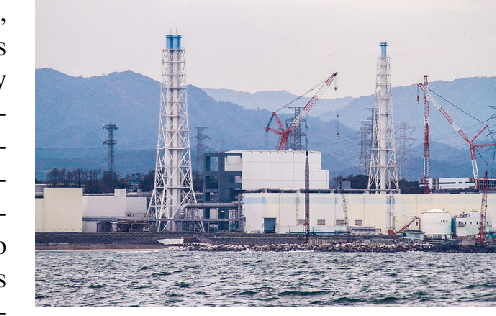

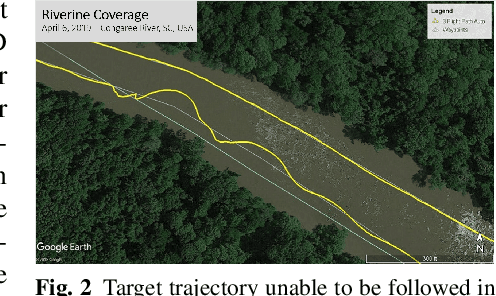
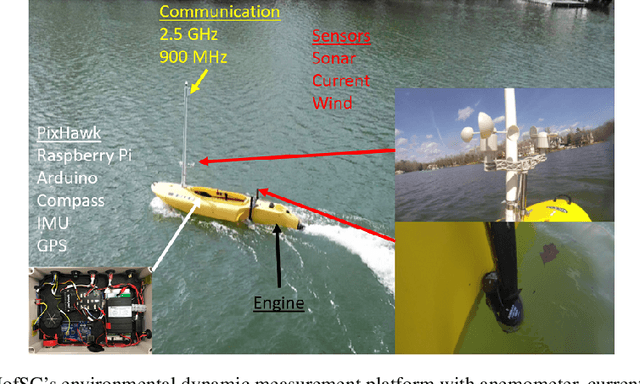
Abstract:The ability to navigate, search, and monitor dynamic marine environments such as ports, deltas, tributaries, and rivers presents several challenges to both human operated and autonomously operated surface vehicles. Human data collection and monitoring is overly taxing and inconsistent when faced with large coverage areas, disturbed environments, and potentially uninhabitable situations. In contrast,the same missions become achievable with Autonomous Surface Vehicles (ASVs)configured and capable of accurately maneuvering in such environments. The two dynamic factors that present formidable challenges to completing precise maneuvers in coastal and moving waters are currents and winds. In this work, we present novel and inexpensive methods for sensing these external forces, together with methods for accurately controlling an ASV in the presence of such external forces. The resulting platform is capable of deploying bathymetric and water quality monitoring sensors. Experimental results in local lakes and rivers demonstrate the feasibility of the proposed approach.
Riverine Coverage with an Autonomous Surface Vehicle over Known Environments
Aug 07, 2019



Abstract:Environmental monitoring and surveying operations on rivers currently are performed primarily with manually-operated boats. In this domain, autonomous coverage of areas is of vital importance, for improving both the quality and the efficiency of coverage. This paper leverages human expertise in river exploration and data collection strategies to automate and optimize these processes using autonomous surface vehicles(ASVs). In particular, three deterministic algorithms for both partial and complete coverage of a river segment are proposed,providing varying path length, coverage density, and turning patterns. These strategies resulted in increases in accuracy and efficiency compared to human performance.The proposed methods were extensively tested in simulation using maps of real rivers of different shapes and sizes. In addition, to verify their performance in real world operations, the algorithms were deployed successfully on several parts of the Congaree River in South Carolina, USA, resulting in total of more than 35km of coverage trajectories in the field.
Meander Based River Coverage by an Autonomous Surface Vehicle
Aug 07, 2019



Abstract:Autonomous coverage has tremendous importance for environmental surveying and exploration tasks performed on rivers both in terms of efficiency and data collection quality. Most surveys of rivers are performed manually using quite similar approaches. Using these practices to automate these processes improves the quality of survey operations. In addition to human expertise on the type of patterns,the coverage of a river can be optimized using the river meanders to determine the direction of coverage. In this work we use the implicit information on the speed of the water current, inferred from the curves of the river, to reduce the cost of cover-age. We use autonomous surface vehicles (ASVs) to deploy the proposed methods and demonstrate the efficiency of our method. In addition we compare the proposed method with previous coverage techniques developed in our lab. When taking into account meanders the coverage time has been decreased in average by more than 20%. The deployments of the ASVs were performed on the Congaree River, SC,USA, and resulted in more than 27km of total coverage trajectories.
External Force Field Modeling for Autonomous Surface Vehicles
Sep 09, 2018



Abstract:Operating in the presence of strong adverse forces is a particularly challenging problem in field robotics. In most robotic operations where the robot is not firmly grounded, such as aerial, surface, and underwater, minimal external forces are assumed as the standard operating procedures. The first action for operating in the presence of non-trivial forces is modeling the forces and their effect on the robots motion. In this work an Autonomous Surface Vehicle (ASV), operating on lakes and rivers with varying winds and currents, collects wind and current measurements with an inexpensive custom-made sensor suite setup, and generates a model of the force field. The modeling process takes into account depth, wind, and current measurements along with the ASVs trajectory from GPS. In this work, we propose a method for an ASV to build an environmental force map by integrating in a Gaussian Process the wind, depth, and current measurements gathered at the surface. We run extensive experimental field trials for our approach on real Jetyak ASVs. Experimental results from different locations validate the proposed modeling approach.
An Autonomous Surface Vehicle for Long Term Operations
Aug 27, 2018
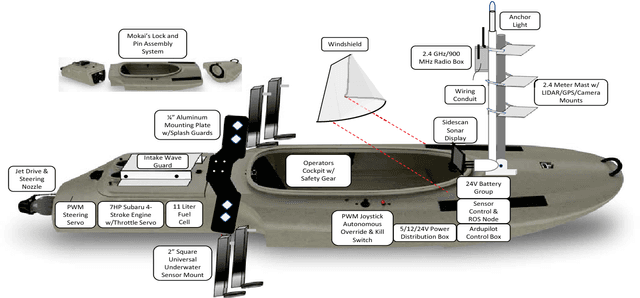
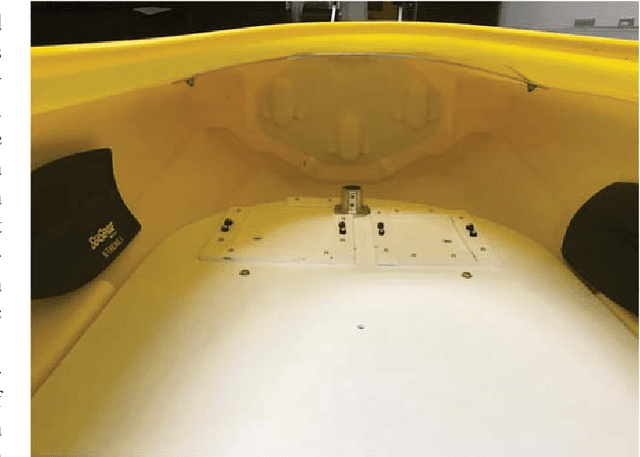
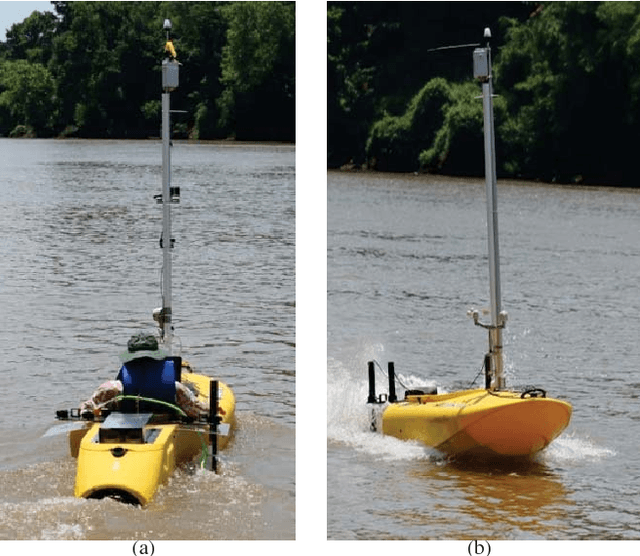
Abstract:Environmental monitoring of marine environments presents several challenges: the harshness of the environment, the often remote location, and most importantly, the vast area it covers. Manual operations are time consuming, often dangerous, and labor intensive. Operations from oceanographic vessels are costly and limited to open seas and generally deeper bodies of water. In addition, with lake, river, and ocean shoreline being a finite resource, waterfront property presents an ever increasing valued commodity, requiring exploration and continued monitoring of remote waterways. In order to efficiently explore and monitor currently known marine environments as well as reach and explore remote areas of interest, we present a design of an autonomous surface vehicle (ASV) with the power to cover large areas, the payload capacity to carry sufficient power and sensor equipment, and enough fuel to remain on task for extended periods. An analysis of the design and a discussion on lessons learned during deployments is presented in this paper.
Multi-robot Dubins Coverage with Autonomous Surface Vehicles
Aug 07, 2018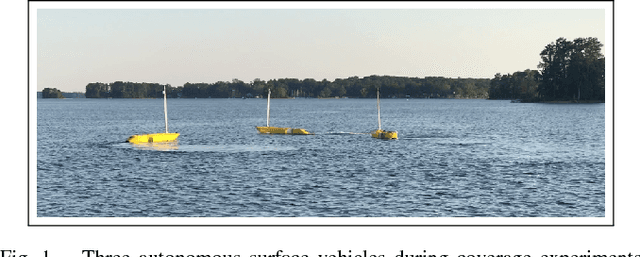
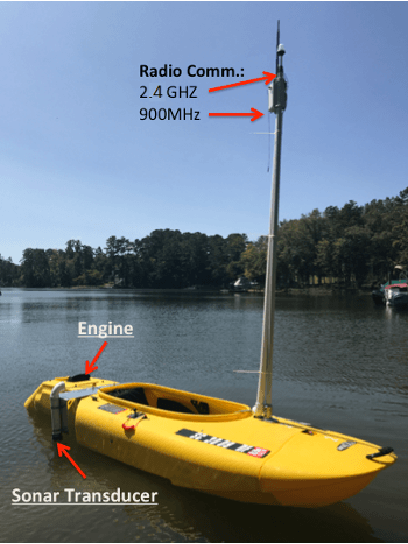
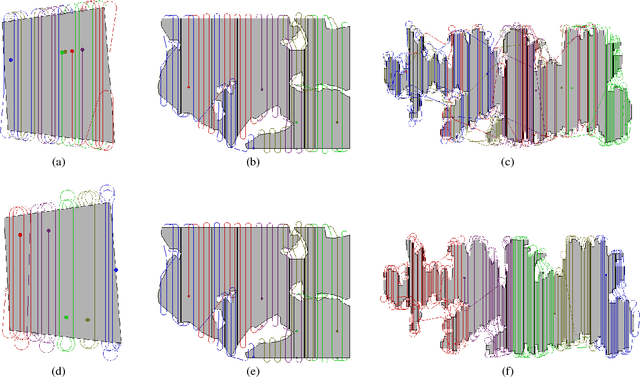

Abstract:In large scale coverage operations, such as marine exploration or aerial monitoring, single robot approaches are not ideal, as they may take too long to cover a large area. In such scenarios, multi-robot approaches are preferable. Furthermore, several real world vehicles are non-holonomic, but can be modeled using Dubins vehicle kinematics. This paper focuses on environmental monitoring of aquatic environments using Autonomous Surface Vehicles (ASVs). In particular, we propose a novel approach for solving the problem of complete coverage of a known environment by a multi-robot team consisting of Dubins vehicles. It is worth noting that both multi-robot coverage and Dubins vehicle coverage are NP-complete problems. As such, we present two heuristics methods based on a variant of the traveling salesman problem -- k-TSP -- formulation and clustering algorithms that efficiently solve the problem. The proposed methods are tested both in simulations to assess their scalability and with a team of ASVs operating on a lake to ensure their applicability in real world.
 Add to Chrome
Add to Chrome Add to Firefox
Add to Firefox Add to Edge
Add to Edge